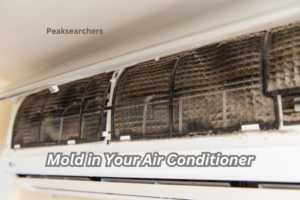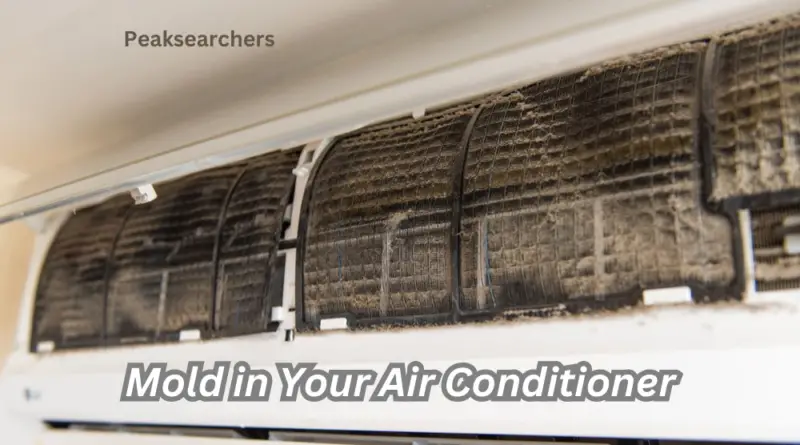How to Prevent Mold in Your Air Conditioner? A Complete Solution
Welcome to our comprehensive guide on preventing mold in your air conditioner. At Peaksearchers, we understand the importance of maintaining a clean and healthy indoor environment. Mold growth in air conditioning systems can not only compromise air quality but also pose potential health risks.
In this article, we will provide you with effective tips and strategies to prevent mold growth in your air conditioner, ensuring a fresh and breathable atmosphere for you and your loved ones.

Understanding Mold Growth in Air Conditioners
Mold is a type of fungus that thrives in environments with excess moisture and organic material. Air conditioners, with their cool and damp conditions, can become breeding grounds for mold if proper care is not taken. Mold spores can easily spread through the air, leading to respiratory issues, allergies, and other health problems.
1. Regular Cleaning and Maintenance
To keep mold at bay, it is essential to perform regular cleaning and maintenance on your air conditioner. Here are the steps you should follow:
a. Filter Cleaning
Start by turning off your air conditioner and removing the filters. Use a vacuum cleaner or wash them with mild soap and water. Allow the filters to dry completely before reinstalling them. Clean filters ensure proper airflow and prevent moisture buildup.
b. Condensate Drain Line Maintenance
Check the condensate drain line for clogs or blockages. Use a mixture of equal parts water and bleach to flush the drain line and remove any mold or algae buildup. This will prevent water accumulation and inhibit mold growth.
c. Coil Cleaning
The evaporator and condenser coils in your air conditioner can collect dirt, debris, and even mold over time. Use a soft brush or a specialized coil cleaner to gently remove any buildup. Ensure that the coils are thoroughly dry before reassembling the unit.
d. Duct Inspection
Inspect the air ducts for any signs of mold growth or moisture. If you notice mold, it is advisable to hire a professional duct cleaning service to remove the contamination. Properly sealed and insulated ductwork can prevent moisture infiltration and subsequent mold growth.
2. Maintain Optimal Humidity Levels
Controlling the humidity levels in your home is crucial for mold prevention. Mold thrives in high-humidity environments, so it is essential to keep the moisture levels in check. Here are some tips to maintain optimal humidity:
a. Use Dehumidifiers
Consider investing in a dehumidifier, especially if you live in a humid climate or have high humidity levels indoors. Dehumidifiers extract excess moisture from the air, reducing the chances of mold growth.
b. Ventilate Moisture-Prone Areas
Ensure proper ventilation in areas prone to moisture, such as bathrooms, kitchens, and laundry rooms. Exhaust fans can help remove excess humidity and prevent condensation.
c. Fix Water Leaks
Promptly repair any water leaks or plumbing issues in your home. Leaking pipes or faucets can contribute to increased humidity and create a favorable environment for mold growth.
3. Adequate Insulation and Airflow
Proper insulation and airflow play a crucial role in mold prevention. Here’s what you need to consider:
a. Insulation
Well-insulated walls, ceilings, and floors help maintain consistent temperatures and prevent condensation. Insulate your home effectively to minimize moisture accumulation and reduce the risk of mold growth.
b. Airflow Optimization
Ensure proper airflow throughout your home by keeping furniture away from air vents and avoiding blockages. Good air circulation inhibits moisture buildup and helps prevent mold growth.
4. Regular Professional Inspections
While regular DIY maintenance is essential, it is also recommended to schedule professional inspections for your air conditioning system. Certified HVAC technicians can identify any hidden issues, perform thorough cleanings, and ensure your system is running efficiently, reducing the risk of mold growth.
Also Read: What Does “Eco” Mean on an Air Conditioner? A Comprehensive Guide
FAQ’s
Why do I keep getting mold in my air conditioner?
Mold can grow in air conditioners due to moisture buildup, dirty filters, improper installation, ductwork issues, or high humidity levels. To prevent mold growth, maintain your AC by cleaning filters regularly, ensuring proper ventilation, monitoring humidity levels, checking for leaks, and seeking professional inspection if needed.
Is mold in AC bad for health?
Yes, mold in an AC can be harmful to health. Inhaling mold spores can cause respiratory issues, allergies, and irritation. Prompt removal is important to minimize health risks. Consult a healthcare professional if needed.
Can mold grow on air filters?
Yes, mold can grow on air filters. Air filters can become a favorable environment for mold growth if they are dirty, damp, or exposed to moisture. Mold spores in the air can settle on the filter and, if conditions are suitable, begin to grow and multiply. This is why it is crucial to regularly clean or replace air filters to prevent mold growth and maintain clean and healthy indoor air quality.
How to prevent mold in your air conditioner in winter?
To prevent mold in your air conditioner during winter:
- Clean and inspect your AC.
- Maintain proper ventilation and airflow.
- Control humidity levels (30-50%).
- Use a programmable thermostat.
- Seal air leaks around the unit.
- Schedule regular maintenance.
These steps will help minimize the chances of mold growth in your air conditioner during the winter season.
How to clean mold in a window air conditioner?
To clean mold in a window air conditioner:
- Turn off and unplug the unit.
- Remove and replace the moldy air filter.
- Mix equal parts water and vinegar or bleach.
- Scrub the filter and front panel with the solution.
- Clean internal components with a damp cloth or sponge.
- Check and clean the drain pan and condensation coils.
- Let all components dry completely.
- Reassemble the unit and consider using a mold inhibitor or mold-resistant filter.
If dealing with extensive mold or uncertainty, consult a professional HVAC technician.
Also Read: Will Rain Damage A Window Air Conditioner? A Complete Guide
Conclusion
Preventing mold in your air conditioner requires proactive measures and regular maintenance. By following the tips outlined in this guide, you can minimize the chances of mold growth and maintain a healthy indoor environment. Remember, a clean and well-maintained air conditioner not only provides cool air but also promotes better air quality, ensuring the well-being of you and your family.


